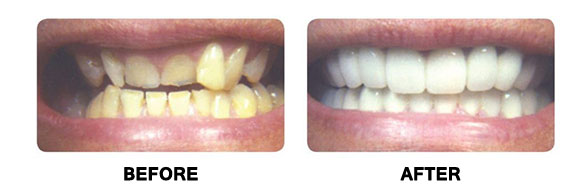Home » Why Implant-Supported Dentures May Be Right For You
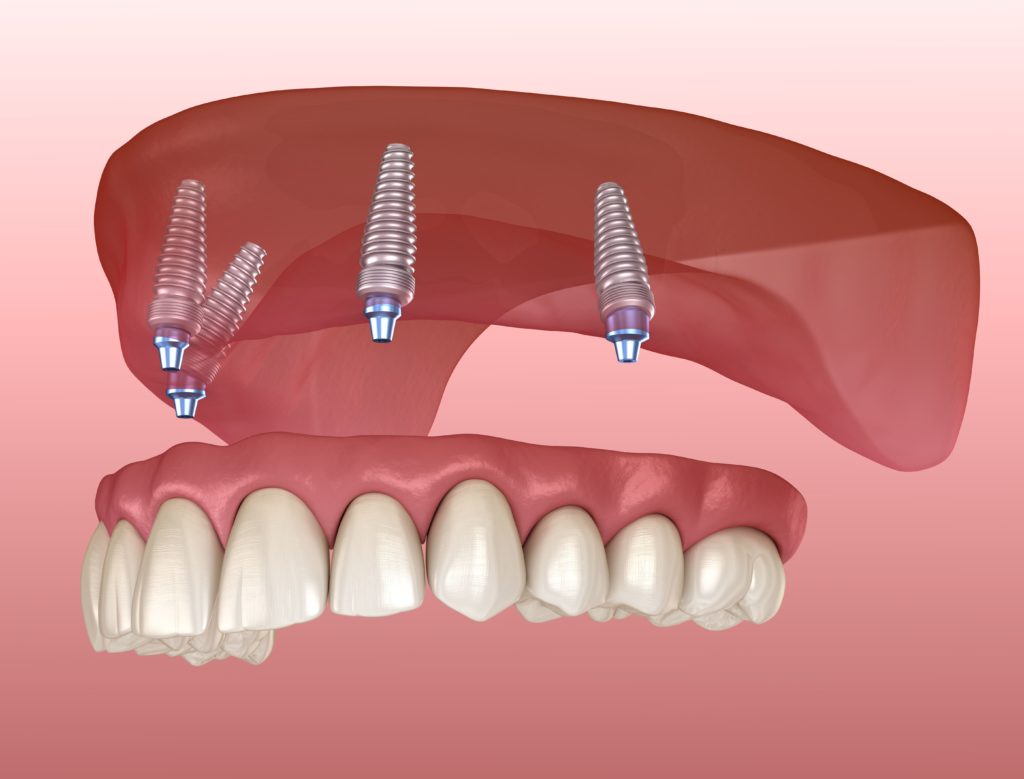
Do you currently have multiple missing, decayed, or damaged teeth? Are you currently wearing dentures, but are tired of them slipping and interfering with your speech? Do you wish there were a more permanent solution to replacing missing, decayed, or damaged teeth?
Currently, the American College of Prosthodontists estimates that 120 million Americans are missing at least once tooth and that about 36 million Americans are missing all their natural teeth. Tooth loss can occur for many reasons including tooth decay, gum disease, smoking, teeth grinding, certain medications, age, genetics, and certain medical conditions.
If you answered “yes” to any of the above questions, or if you are one of the 36 million Americans considering a full mouth reconstruction, then implant-supported dentures may be the answer you’ve been waiting for. Implant-supported dentures sometimes referred to as “All-on-Four or All-on-4” implants, are dentures that are rooted in place using dental implants.
Similar to dentures, they can restore an entire upper and/or lower arch. Unlike dentures, however, implant-supported dentures do not slip or interfere with speech. Additionally, implant-supported dentures will not rub against the gums like traditional dentures do. But perhaps the greatest benefit of implant-supported dentures is that they stimulate the jawbone. Unfortunately, because traditional dentures sit on top of the bone instead of within the bone, they do not stimulate the jawbone.
To stay healthy, the jawbone needs to be stimulated by the forces of chewing and biting. Without this stimulation, the body starts a process called bone resorption. This occurs approximately six months after a tooth or multiple teeth are lost. Bone resorption is the process by which the calcium is absorbed back into the body and the jawbone begins to breakdown. Over time, this process will cause the bone to change shape.
Because implant-supported dentures provide the jawbone with stimulation, they can restore missing, decayed, and damaged teeth all while preserving the natural underlying bone structure. For this reason, Dr. Mancino strongly recommends implant-supported dentures over traditional dentures for most patients. However, for treatment to be successful, the patient in question must have adequate bone mass to support multiple dental implants.
To determine if there is enough bone mass present, Dr. Mancino will likely obtain a CBCT scan. CBCT stands for cone-beam computed tomography, which is a specialized type of x-ray. A CBCT scan rotates entirely around the head and generates 150-200 individual 2-D images that are then compiled digitally into a single 3-D image. This 3-D image shows teeth, soft tissues, nerve pathways, and bone in a single image. The scan itself only takes about 20-40 seconds and emits very minimal radiation.
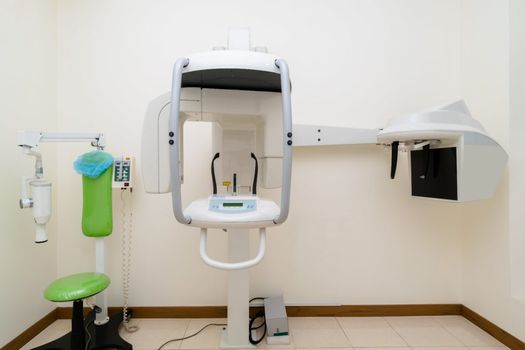
To maintain bone mass, it is important to pursue the placement of implant-supported dentures sooner rather than later if you have missing teeth. If you have teeth that are severely decayed or damaged, these teeth will need to be extracted before the placement of dental implants. To avoid bone loss, it is often beneficial to have implants placed immediately following an extraction.
In cases where bone loss has occurred, other procedures may be used to build up bone mass. The most popular procedure is called a bone graft. During a bone graft, bone material is placed in areas of low bone mass. In about 3-6 months, this bone material grows new bone in this area. Another procedure is called a sinus lift. A sinus lift is a specialized bone graft that is performed on the upper jaw to build up the thickness of the bone between the teeth and the sinus cavity, essentially “lifting” the sinus cavity. Both procedures allow for the safe placement of dental implants.
Once it has been determined there is adequate bone mass in the treatment areas, implant-supported dentures can be placed. This process starts with the placement of approximately 2-6 dental implants in the affected arch. In the case of a full-mouth restoration, 2-6 dental implants will be placed in the upper arch and an additional 2-6 implants will be placed in the lower arch.
To place a dental implant, a small incision will be made in your gums at the implant site. Then the tooth socket will be cleaned and shaped for the implant screw. The implant will then be screwed into place and the abutment, or connector, the piece will be attached. The abutment shape can vary depending on the type of denture being used.
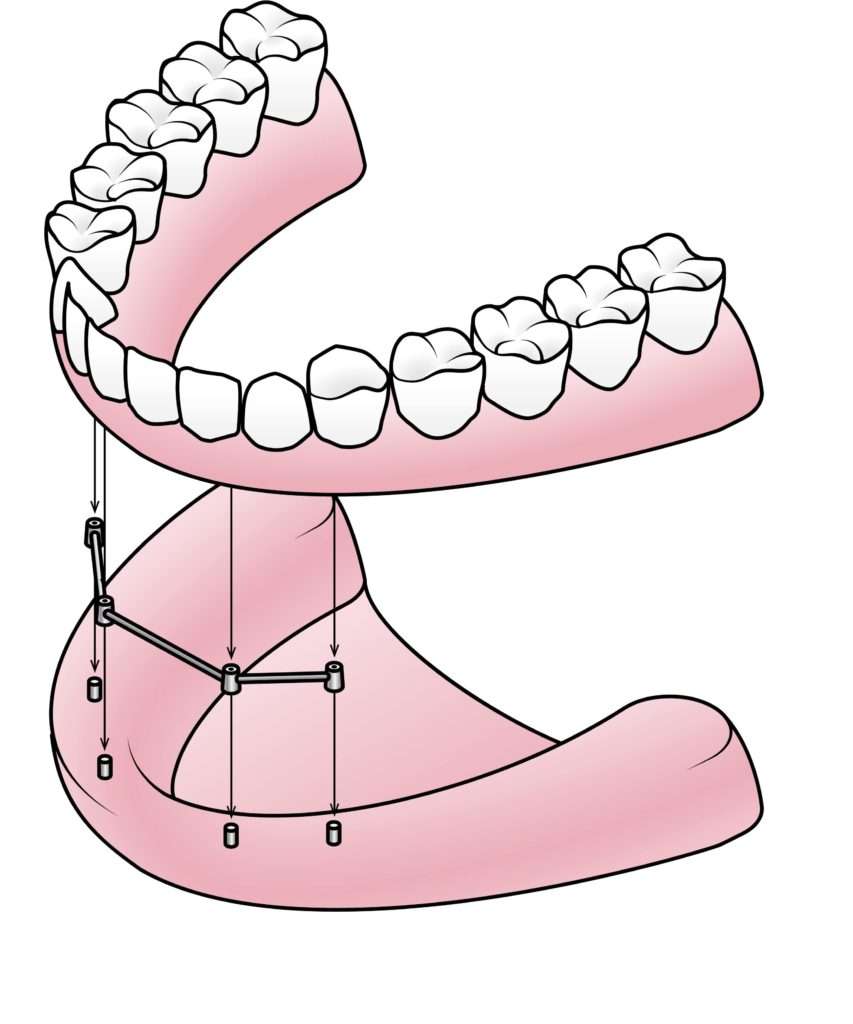
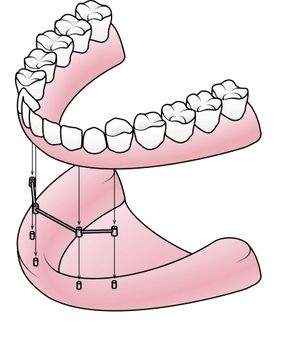
There are two types of implant-supported dentures: bar-retained and ball retained. Bar retained implants require less dental implants and are supported by a single bar that clicks into the abutments. Ball retained implants, on the other hand, require more dental implants, but attach to these implants using a ball and socket attachment. During your consultation, which type is best for your case will be discussed.
Once the implants and abutments are in place, the denture can be placed. In some cases, a temporary denture will be used and in others, the permanent restoration may be placed at this time. When the permanent restoration is placed, it is called immediate load dental implants or teeth in a day implants.
Although they are called immediate load implants, your implants will still need time to heal before they can handle the full force of chewing and biting. For this reason, you will be placed on a temporary soft food diet until osseointegration occurs. Osseointegration is a process where the implants fuse with the surrounding bone. For treatment success, osseointegration must occur to secure the implants in place.
Along with a temporary soft foods diet, there will be additional post-operative instructions that you must follow to guarantee the best treatment outcome. With implant-supported dentures, patient compliance is an important part of a successful recovery. Specific post-operative guidelines can vary, but generally, they revolve around taking antibiotics, keeping the treatment area clean, and attending post-op appointments.
Additionally, you will need to avoid damaging behaviors and maintain proper daily hygiene. Damaging behaviors are things like smoking, ice or pen chewing, nail-biting, and using your teeth to open packages. Also, if you grind your teeth, you may need to wear a special dental appliance called a mouthguard to protect your denture and your implants while they heal. Proper daily oral hygiene will consist of brushing your dentures with a soft toothbrush and denture detergent after removing them every night. You will also need to gently brush the areas around the abutment to keep these areas clean as well.
If properly cared for, implant-supported dentures can last for several years. The exact lifespan of implant-supported dentures is hard to say because there are three pieces you need to consider. The dental implants last the longest and can last up to 20 years, although most last for about 10-15 years. The denture piece, however, only lasts for about 8 years. Finally, with a bar-retained denture, attachments will need to be replaced every 6 months to a year. However, replacing the denture and attachment pieces are relatively easy.
Are you interested in seeing what implant-supported dentures can offer you? For the best cosmetic dentist in Wall, NJ, schedule a consultation with Dr. Anthony Mancino of Comprehensive Dentistry today! Comprehensive Dentistry is also proud to serve residents in Monmouth and Ocean Counties.
After-Hours Emergencies Or Issues
Call 732-556-9600
Our Services
Dental Emergencies
General Dentistry
Cosmetic Dentistry
Restorative Dentistry
Full Mouth Reconstruction
Smile Makeover

3350 Route 138 W
Bldg 2, Ste 127
Wall Township, NJ 07719
(732) 556-9600
 3350 NJ-138 W. Bldg 2, Ste 127, Wall Township, NJ 07719
732-556-9600
Prices Vary
Comprehensive Dentistry -
5 star rating - based on 25+ reviews in Google
3350 NJ-138 W. Bldg 2, Ste 127, Wall Township, NJ 07719
732-556-9600
Prices Vary
Comprehensive Dentistry -
5 star rating - based on 25+ reviews in Google
